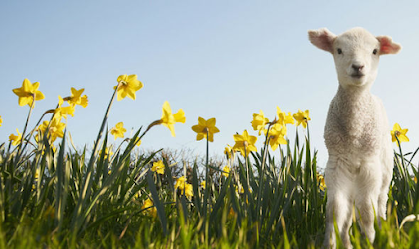Climate Change Broke 250 Years of Record in United Kingdom
Spring has arrived a month earlier in the UK since the 1980s
The pattern may be found in 250 years of records all throughout the world. Scientists have been recording the shifting seasons across the British Isles for almost 200 years. These long-term records have now shown an alarming pattern.
The arrival of spring, which is marked by the blossoming of flowers after a long winter, is roughly a month sooner than it used to be. The findings were published in Proceedings of the Royal Society B, a journal of biological sciences published by the UK's national science institution, yesterday.
Over 400,000 individual observations of flowering plants from around the United Kingdom, dating back to 1753, were used in the study. These statistics, gathered and collated by the Woodland Trust in the United Kingdom, currently make up the country's biggest database dedicated to the study of seasonal changes in plants and animals.
What Scientists Think?
“The consequences of an early flowering season might reverberate across ecosystems, producing ecological (or phenological) mismatch, which occurs when the life cycles of species that have evolved together and rely on each other get out of sync.”
Botanists retained a lot of the early records. Today, though, everyone may contribute. As a result, the number of observations has skyrocketed in recent decades.
Global Warming & Climate Change Stepped In?
Ulf experts, a scientist at the University of Cambridge and the study's principal author, stated, "Nowadays, we would say this is practically a citizen science dataset." "Everyone who wishes to go to the garden looks at the flowers and takes notes." experts, who formerly lived in Switzerland, discovered the database after relocating to the United Kingdom a few years ago. He was curious if the timing of the spring bloom had shifted as a result of global warming.
The researchers discovered a distinct trend after scanning the database and examining hundreds of thousands of records covering more than 400 different plant species. In comparison to previous years, the average timing of the first blooming has advanced by around a month since the mid-1980s.
The researchers then matched their findings to historical temperature and precipitation records from the United Kingdom. They discovered that variations in spring bloom are closely linked to rising temperatures.
Climate change driven by humans is heating up the British Isles, as it is the rest of the world. At the same time, during the last several decades, a shift in a natural climate cycle that impacts temperatures over the North Atlantic area has intensified that warming.
Since the 1980s, the combination of these two causes appears to have greatly hastened spring's advance. The United Kingdom is far from the only country where this is taking done. Around the world, scientists are recording the telltale signs of early springs.
Some studies, such as the one conducted in the United Kingdom, concentrate on the timing of flowering plants. According to a new EPA study, Washington, D.C.'s famed cherry blossoms, which were originally a gift from the mayor of Tokyo in 1912, are now blooming around five days sooner than they were a century ago. In Japan, a similar tendency is emerging (Climatewire, March 30, 2021).
In a 2016 study published in Ecosphere, researchers looked at the timing of the first fresh flowers and leaves in national parks around the country. Spring is arriving sooner in nearly three-quarters of the parks, according to the study.
Different markers have been examined in other research. Snow in certain mountainous regions of the world is melting sooner in the spring, according to research. Several bird species are traveling earlier in the year than they were previously. In certain areas, even the allergy-inducing pollen season is lengthening.
While the advent of warmer weather is usually a pleasant respite after a long, bitter winter, these changes aren't always beneficial. Many plants and animals rely on one another for life; but, if they don't adapt to climate change at the same time, their connection may be jeopardized.
For example, certain flowers rely on insects for pollination. However, if flowers bloom too early, before bees and butterflies have appeared, they may all perish.
Some studies have also highlighted concerns about "false springs," which occur when mild weather arrives after a long winter only to be followed by another cold spell. It's a serious problem for plants that bloom or develop too early in the season. This is especially true for agricultural crops, which are susceptible to unexpected freezing.
The latest study emphasizes these dangers once more. "The functioning and production of biological, ecological, and agricultural systems would be at an unprecedented danger," the researchers warn, if plants in the United Kingdom continue to blossom sooner and earlier as climate change worsens. pointed out that changes in flowering plants are inevitable proof of climate change's effects. Since the beginning of the industrial period more than a century ago, the earth has warmed by around a degree Celsius (1.8 degrees Fahrenheit). One tangible sign of this warming is the emergence of earlier springs.
"Everyone is having a hard time figuring out what 1 degree means." explained. "Basically, 1 degree of warming indicates one month earlier commencement of the vegetative period," says the report. This is something that everybody notices."
Copyright 2022. Reprinted from E&E News with permission from POLITICO, LLC. E&E News is a vital source of information for energy and environmental professionals.




Comments
Post a Comment